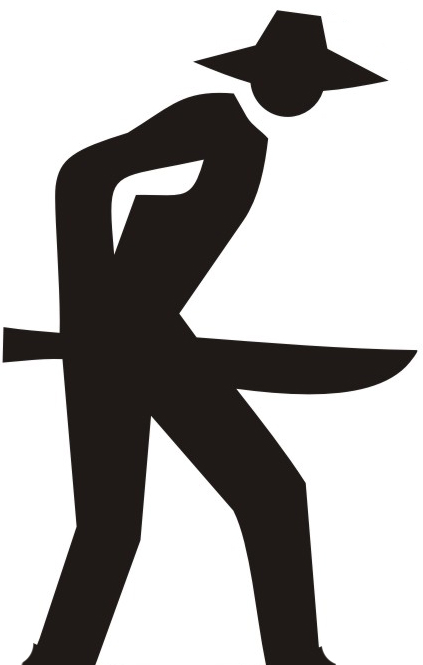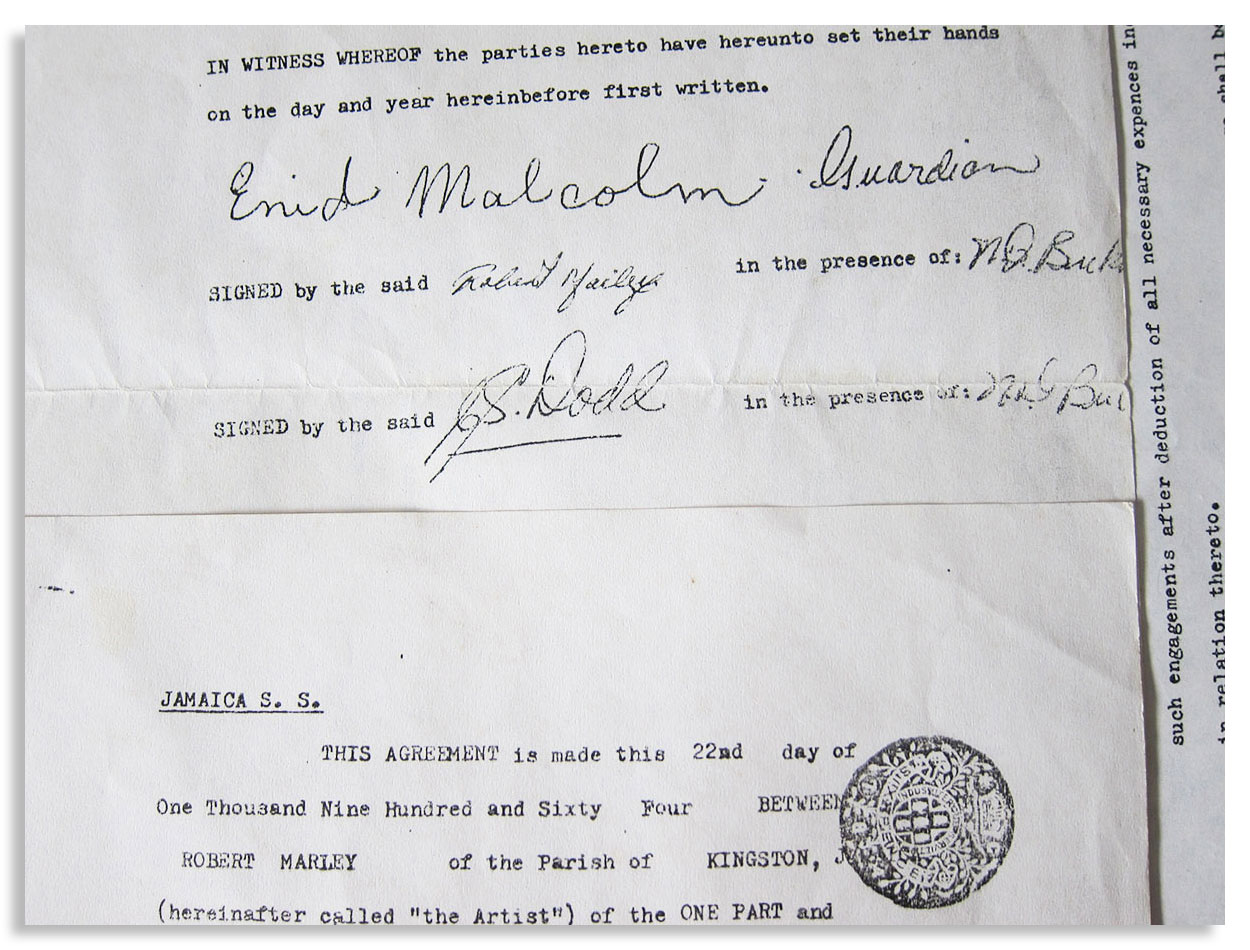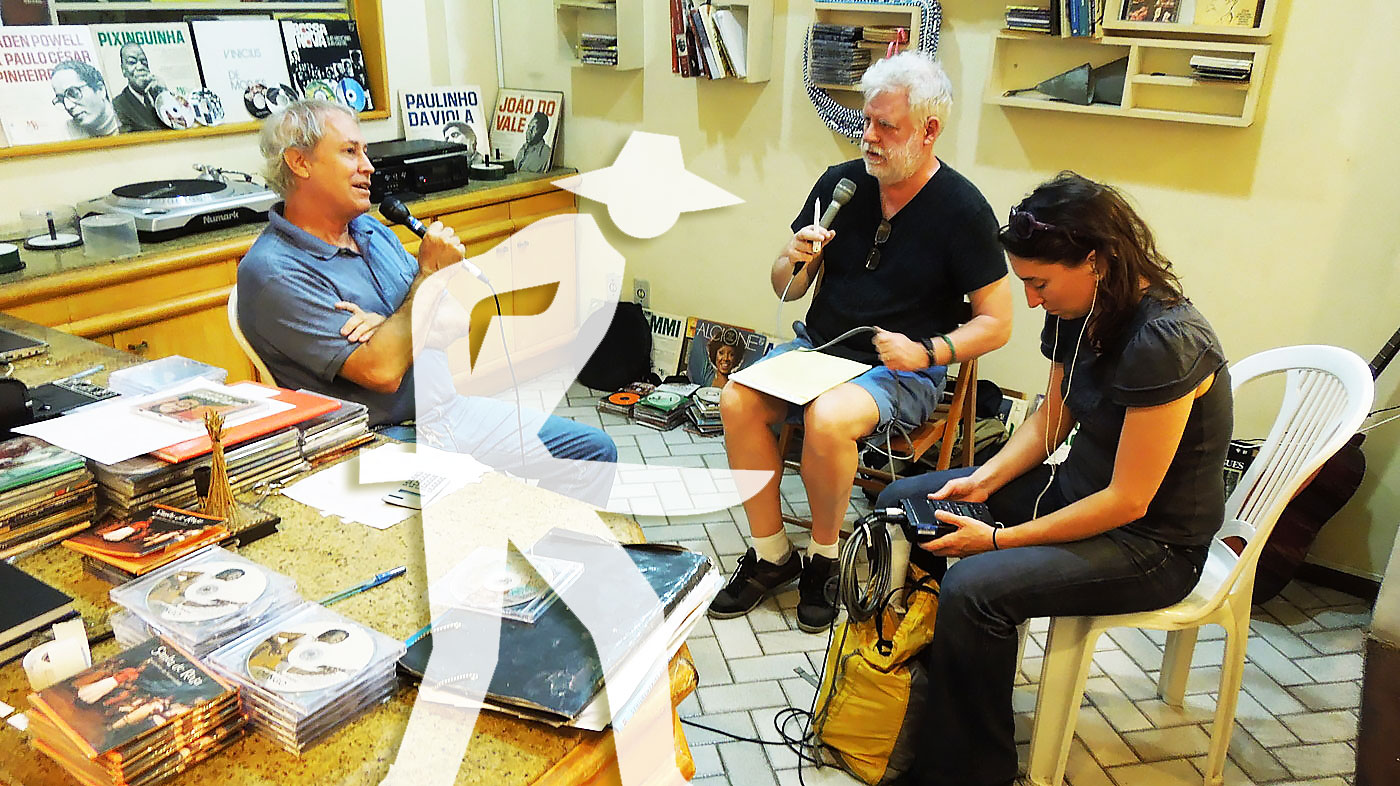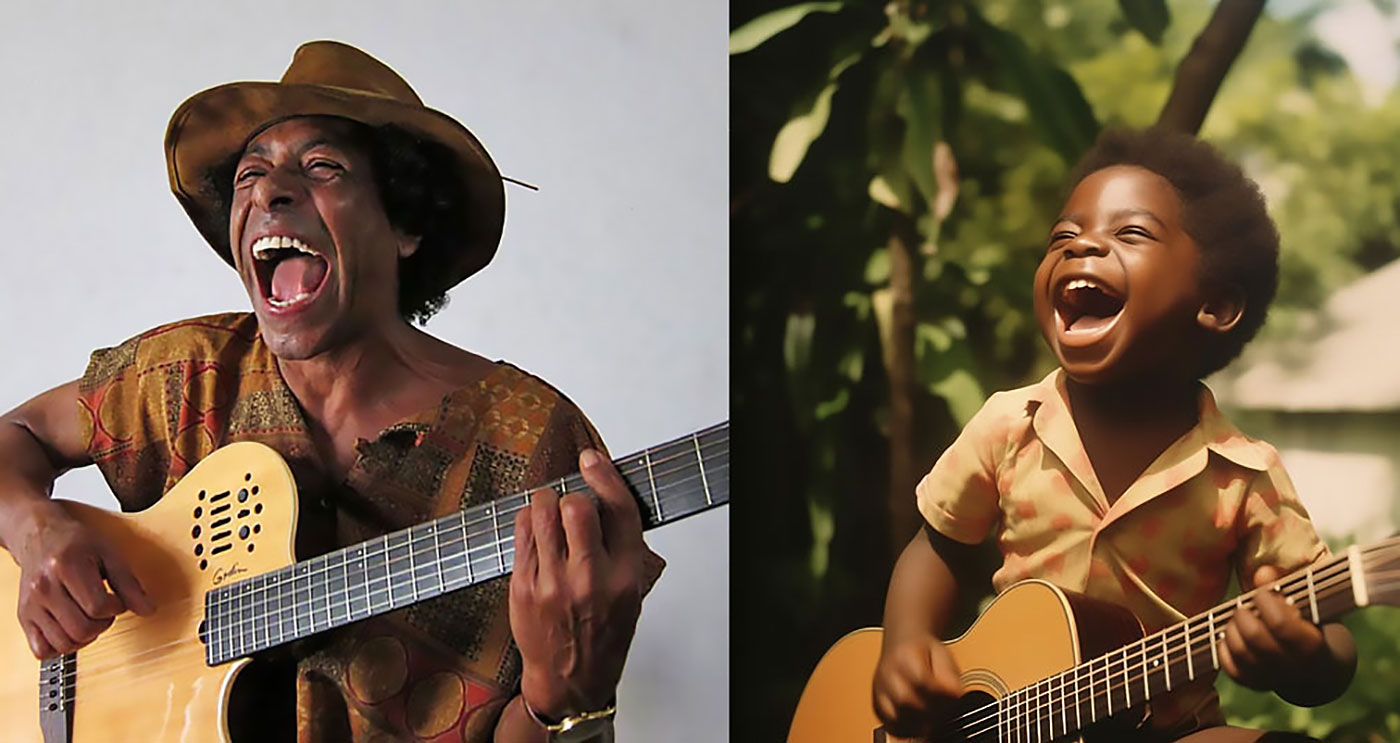CURATION
- from this page: by Matrix
Network Node
- Name: Claudia Villela
- City/Place: Santa Cruz, California
- Country: United States
- Hometown: Rio de Janeiro, Brazil
Current News
-
What's Up?
"The closest the jazz world is likely to ever come to a female Bobby Mc Ferrin, the Brazilian -born genius with a blistering voice."
—Jazz Times
"... Remarkable, beautiful, towering voice..."
—New York Times
Life & Work
-
Bio:
While growing up in Rio, Villela literally soaked up music from the air, falling asleep at night to the sounds wafting over from the samba school behind her grandmother’s house. Singing professionally as a teenager, she performed at college festivals and worked as a back-up singer. At the same time, she was strongly drawn to medicine, and eventually decided to merge her two passions, graduating with a degree in music therapy from the Brazilian Conservatory of Music in 1983.
Not long after her move to California, Villela started singing with the Stanford University Chorus, and then joined the De Anza College Jazz Singers. Eventually she won a scholarship that enabled her to study with the great jazz vocalist Sheila Jordan at the Manhattan School of Music. As Villela sees it, her music therapy background gave her the flexibility to make the musical transition from Rio to the Bay Area.
Developing a distinctive synthesis of jazz and Brazilian musical forms, she began attracting attention from musical heavy weights like tenor sax titan Michael Brecker, bass virtuoso Harvie Swartz (now Harvie S) and revered Brazilian guitarist Toninho Horta, who all play on her captivating, hard-to-find 1996 album Supernova. The same year, her breathtaking album Asa Verde earned her a nomination for Jazz Singer of the Year by the National Association of Independent Record Distributors (NAIRD).
The year 2003 marked the release of InverseUniverse (Adventure Music), a program of dazzling original pieces created with her longtime collaborator, Rio-born guitarist Ricardo Peixoto. The exquisite harmonica contributions of guest star Toots Thielemans fulfilled Villela’s ambition of working with jazz’s foremost aficionado of Brazilian music.
After making a compelling case for herself as an inspired composer, she delivered a breathtaking session of spontaneous invention with the lavishly praised 2004 duo session featuring piano guru Kenny Werner, DreamTales (Adventure Music). Werner admitted to skepticism when Villela approached him about going into the studio without any songs prepared, but came away from the session a believer. In the fall of 2008, she received a high profile commission from New York University commissioned to set poems by several Latin American poets to music.
In recent years, Villela’s international reputation as a performer and composer has continued to grow through appearances at the world’s most prestigious jazz festivals and clubs.
Português:
Ao crescer no Rio, Villela literalmente absorvia música pelo ar, adormecendo à noite ao som que chegava da escola de samba atrás da casa de sua avó. Cantando profissionalmente desde a adolescência, ela se apresentou em festivais universitários e trabalhou como cantora de apoio. Ao mesmo tempo, sentia uma forte atração pela medicina e, eventualmente, decidiu unir suas duas paixões, formando-se em musicoterapia pelo Conservatório Brasileiro de Música em 1983.
Pouco depois de se mudar para a Califórnia, Villela começou a cantar no Coro da Universidade Stanford e depois ingressou no De Anza College Jazz Singers. Eventualmente, ganhou uma bolsa que a permitiu estudar com a grande vocalista de jazz Sheila Jordan na Manhattan School of Music. Na visão de Villela, seu histórico em musicoterapia lhe deu a flexibilidade para fazer a transição musical do Rio para a área da Baía.
Desenvolvendo uma síntese distinta de jazz e formas musicais brasileiras, ela começou a chamar a atenção de pesos pesados da música como o titã do saxofone tenor Michael Brecker, o virtuoso do contrabaixo Harvie Swartz (agora Harvie S) e o reverenciado guitarrista brasileiro Toninho Horta, todos presentes em seu cativante e difícil de encontrar álbum de 1996, Supernova. No mesmo ano, seu impressionante álbum Asa Verde lhe rendeu uma indicação para Cantora de Jazz do Ano pela Associação Nacional de Distribuidores Independentes de Gravações (NAIRD).
O ano de 2003 marcou o lançamento de InverseUniverse (Adventure Music), um programa de peças originais deslumbrantes criadas com seu colaborador de longa data, o guitarrista nascido no Rio, Ricardo Peixoto. As contribuições exquisitas da harmônica do convidado especial Toots Thielemans realizaram a ambição de Villela de trabalhar com o maior entusiasta do jazz da música brasileira.
Depois de apresentar um caso convincente como compositora inspirada, ela entregou uma sessão arrebatadora de invenção espontânea com a elogiada sessão de duo de 2004 com o guru do piano Kenny Werner, DreamTales (Adventure Music). Werner admitiu ceticismo quando Villela abordou a ideia de entrar no estúdio sem nenhuma música preparada, mas saiu da sessão como um crente. No outono de 2008, ela recebeu uma comissão de destaque da New York University para musicar poemas de diversos poetas latino-americanos.
Nos últimos anos, a reputação internacional de Villela como intérprete e compositora continuou a crescer por meio de apresentações nos festivais e clubes de jazz mais prestigiados do mundo.
Contact Information
- Email: [email protected]
- Contact by Webpage: http://www.claudiavillela.com/contact
Media | Markets
- ▶ Buy My Music: http://www.claudiavillela.com/store
- ▶ Website: http://www.claudiavillela.com
- ▶ YouTube Channel: http://www.youtube.com/@claudiavillela1
- ▶ YouTube Music: http://music.youtube.com/channel/UCUZgG9zke7T2Yw9uExpKMvg
- ▶ Spotify: http://open.spotify.com/album/5FaaOYNrAeMU6uaX7PFZpi
- ▶ Spotify 2: http://open.spotify.com/album/3qoDzN2dd0VcfCipJHq3UX
Clips (more may be added)
The Matrix is a small world network. Like stars coalescing into a galaxy, creators in the Matrix mathematically gravitate to proximity to all other creators in the Matrix, no matter how far apart in location, fame or society. This gravity is called "the small world phenomenon". Human society is a small world network, wherein over 8 billion human beings average 6 or fewer steps apart. Our brains contain small world networks...
![]() Wolfram MathWorld on the Small World Phenomenon
Wolfram MathWorld on the Small World Phenomenon
![]() Matemática Wolfram sobre o Fenômeno Mundo Pequeno
Matemática Wolfram sobre o Fenômeno Mundo Pequeno
"In a small world, great things are possible."

It's not which pill you take, it's which pathways you take. Pathways originating in the sprawling cultural matrix of Brazil: Indigenous, African, Sephardic and then Ashkenazic, European, Asian... Matrix Ground Zero is the Recôncavo, contouring the Bay of All Saints, earthly center of gravity for the disembarkation of enslaved human beings — and the sublimity they created — presided over by the ineffable Black Rome of Brazil: Salvador da Bahia.
("Black Rome" is an appellation per Caetano Veloso, son of the Recôncavo, via Mãe Aninha of Ilê Axé Opô Afonjá.)
"Dear Sparrow: I am thrilled to receive your email! Thank you for including me in this wonderful matrix."
—Susan Rogers: Personal recording engineer for Prince, inc. "Purple Rain", "Sign o' the Times", "Around the World in a Day"... Director of the Berklee Music Perception and Cognition Laboratory
"Thanks! It looks great!....I didn't write 'Cantaloupe Island' though...Herbie Hancock did! Great Page though, well done! best, Randy"
"We appreciate you including Kamasi in the matrix, Sparrow."
—Banch Abegaze: manager, Kamasi Washington
"This is super impressive work ! Congratulations ! Thanks for including me :)))"
—Clarice Assad: Pianist and composer with works performed by Yo Yo Ma and orchestras around the world
"Dear Sparrow, Many thanks for this – I am touched!"
—Julian Lloyd-Webber: UK's premier cellist; brother of Andrew Lloyd Webber (Evita, Jesus Christ Superstar, Cats, Phantom of the Opera...)
"Thanks, this is a brilliant idea!!"
—Alicia Svigals: World's premier klezmer violinist
Developed here in the Historic Center of Salvador da Bahia ↓ .
![]() Bule Bule (Assis Valente)
Bule Bule (Assis Valente)
"♫ The time has come for these bronzed people to show their value..."
Production: Betão Aguiar
MATRIX MODUS OPERANDI
Recommend somebody and you will appear on that person's page. Somebody recommends you and they will appear on your page.
Both pulled by the inexorable mathematical gravity of the small world phenomenon to within range of everybody inside.
And by logical extension, to within range of all humanity outside as well.
MATRIX (PARDAL)
I'm Pardal here in Brazil (that's "Sparrow" in English). The deep roots of this project are in Manhattan, where Allen Klein (managed the Beatles and The Rolling Stones) called me about royalties for the estate of Sam Cooke... where Jerry Ragovoy (co-wrote Time is On My Side, sung by the Stones; Piece of My Heart, Janis Joplin of course; and Pata Pata, sung by the great Miriam Makeba) called me looking for unpaid royalties... where I did contract and licensing for Carlinhos Brown's participation on Bahia Black with Wayne Shorter and Herbie Hancock...
...where I rescued unpaid royalties for Aretha Franklin (from Atlantic Records), Barbra Streisand (from CBS Records), Led Zeppelin, Mongo Santamaria, Gilberto Gil, Astrud Gilberto, Airto Moreira, Jim Hall, Wah Wah Watson (Melvin Ragin), Ray Barretto, Philip Glass, Clement "Sir Coxsone" Dodd for his interest in Bob Marley compositions, Cat Stevens/Yusuf Islam and others...
...where I worked with Earl "Speedo" Carroll of the Cadillacs (who went from doo-wopping as a kid on Harlem streetcorners to top of the charts to working as a janitor at P.S. 87 in Manhattan without ever losing what it was that made him special in the first place), and with Jake and Zeke Carey of The Flamingos (I Only Have Eyes for You)... stuff like that.

Yeah this is Bob's first record contract, made with Clement "Sir Coxsone" Dodd of Studio One and co-signed by his aunt because he was under 21. I took it to Black Rock to argue with CBS' lawyers about the royalties they didn't want to pay (they paid).
MATRIX MUSICAL
I built the Matrix below (I'm below left, with David Dye & Kim Junod for U.S. National Public Radio) among some of the world's most powerfully moving music, some of it made by people barely known beyond village borders. Or in the case of Sodré, his anthem A MASSA — a paean to Brazil's poor ("our pain is the pain of a timid boy, a calf stepped on...") — having blasted from every radio between the Amazon and Brazil's industrial south, before he was silenced. The Matrix started with Sodré, with João do Boi, with Roberto Mendes, with Bule Bule, with Roque Ferreira... music rooted in the sugarcane plantations of Bahia. Hence our logo (a cane cutter).
A Massa (do povo carente) / The Masses (of people in need)

-
Add to my PlaylistA Massa - Raymundo Sodré (7,093 plays)
-
Add to my PlaylistSina de Cantador - Raymundo So... (6,909 plays)
-
Add to my PlaylistMagnetismo - Raymundo Sodré ... (6,353 plays)
-
Add to my PlaylistSacando a Cana - Raymundo Sodr... (5,957 plays)
-
Add to my PlaylistMêrêrê - Raymundo Sodré (5,465 plays)
-
Add to my PlaylistJardim do Amor - Raymundo Sodr... (4,677 plays)
-
Add to my PlaylistDebaixo do Céu - Raymundo Sodr... (4,151 plays)
-
Add to my PlaylistDesejo de Amar - Raymundo Sodr... (3,861 plays)
-
Add to my PlaylistOração pra Yá Oxum - Raymundo ... (3,741 plays)
-
Add to my PlaylistYá África - Raymundo Sodré (3,509 plays)
-
Add to my PlaylistMeu Rio, Cadê o Papel - Raymun... (3,177 plays)
-
Add to my PlaylistCasa de Trois - Raymundo Sodré... (2,896 plays)
-
Add to my PlaylistMulher é Laço que Prende o Coração do Vaqueiro - R... (2,556 plays)



































































































































































































































































































































































































































































